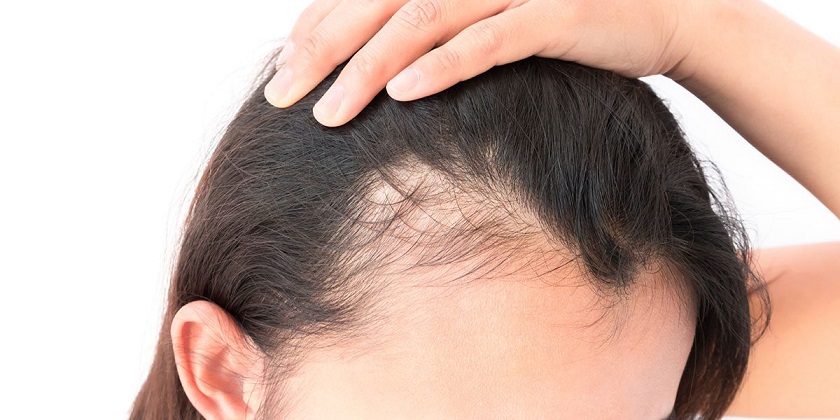- Home
- Androgenetic Alopecia treatment

Also known as pattern baldness, androgenic alopecia is a genetically determined, patterned, progressive loss of hair from the scalp and occurs in both men and women. Both androgens and genetics play a role in its pathogenesis.
The term androgenic alopecia is best used only when referring to male-pattern hair loss, as most females likely do not share the androgenic pathway. A more appropriate term for women is female-pattern hair loss. The term pattern hair loss will be used when referring to hair loss affecting both sexes.
Men present with hair thinning in the temporal areas that advance to the crown (vertex) area as the alopecia progresses. Women usually have more diffuse thinning on the crown area, and less commonly present with a male-type pattern.
Diagnosis is clinical and is based on recognizing the pattern of hair loss.
Possible treatments are oral finasteride and/or topical minoxidil solution or foam for men, and topical minoxidil solution for women.
For women with female-pattern baldness and concomitant hyperandrogenism (less than 40% of cases), additional androgen-suppressive therapy may be considered.
Definition
A genetically determined, patterned, progressive loss of hair from the scalp. In men, hair loss is caused by androgen-mediated follicular miniaturization that leads to fine, short, nonpigmented, vellus hair formation. The pathogenesis of female-pattern hair loss has not been well characterized, and androgens are not believed to play a major role for most women. Historically, the incidence of male- and female-pattern hair loss has been significantly underestimated by the exclusion of the early stages of hair loss. If all stages of hair loss are included, the incidence of pattern hair loss may be as high as 98% in men, and 86% in women (XX). [1] Men present with gradual thinning in the temporal areas, producing a characteristic M shape with gradual extension to the crown (vertex) area. Women usually present with diffuse thinning on the crown area while maintaining a frontal hairline.

